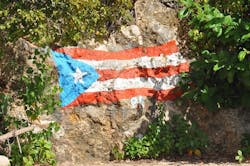New Research Estimates Approximately 5,000 Deaths Related to Hurricane Maria
According to new research conducted by a team of scientists at the Harvard T.H. Chan School of Public Health, perhaps 5,000 individuals died as a result of Hurricane Maria in Puerto Rico, which occurred in September of 2017. The current official death toll only accounts for 64 lives lost as a result of the hurricane.
To reach this figure, the scientists looked beyond a body count that were a direct result of the punishing force of the storm, but instead furthered the scope by surveying occupants of many affected households, inquiring about their specific experiences. The researchers also established a time frame of Sept. 20 to Dec. 31, 2017.
From this established framework, the scientists estimated 4,645 “excess deaths” had likely occurred as a direct result of the effects of the hurricane. These deaths were described as deaths that would not have happened were it not for the disaster conditions Puerto Rico was thrust into following the storm.
It is important to note that this figure of 5,000 presented is not entirely precise, as the researchers provide a potential range that goes well in each direction beyond the number, specifically claiming that there is a 95% likelihood that the final death toll exists somewhere between 800 to 8,500. The researchers settled on 5,000 as a likely figure.
The team surveyed 3,299 household throughout Puerto Rico at random. 38 deaths were reported in that sample, and researchers extrapolated that figure to reach the estimate presented in the study.
The study also makes note of the rampant loss of electricity experienced as a result of the hurricane. It claims that 83% of Puerto Rican households were without power during the timeframe analyzed for the research. Electricity loss remains a contentious issue today, as it was just announced on May 18, 2018, that the Federal Emergency Management Agency (FEMA) would decline to extend its contract with Puerto Rico to continue its repair work on the island’s power grid. Approximately 16,000 homes remain without power eight months after Hurricane Maria.
While researchers only accounted for deaths through the end of 2017 for their estimate, they claim it is likely that such “excess deaths” continued to occur in 2018.
“We saw consistent, high rates in September, October, November, December,” said Rafael Irizarry, a biostatistician on the research team. “There’s no reason to think that on Jan. 1 this trend stops.”
Getting a more accurate picture of the total loss of life not only has personal implications of closure for many families, but also involves significant financial implications regarding aid provided and preparedness for the island itself.
